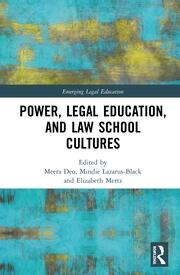Featured in Power, Legal Education, and Law School Cultures (Ashgate Publishing)
This chapter builds on Deo’s description of continuing difficulties facing “traditional outsiders” on U.S. law faculties, and supports her warning that real remedies will require deep and ongoing attention. It first reviews Barnes and Mertz’s work from the pioneering After Tenure study, summarizing quantitative and qualitative results that align with Deo’s findings. It then asks why a set of institutions nominally committed to justice and steeped in academic knowledge practices is still encountering stubborn problems surrounding diversity. This is just one instance of a larger question facing efforts at achieving justice. Institutions and their accompanying cultures and rhetorics are generally slow to change. From courts to educational institutions, true racial integration and gender equality have proved elusive. Anthropologists have addressed this issue for a long time, although legal scholars have not taken much notice of their research. Critical race scholars have made major contributions to this area but have received only slightly more attention than have anthropologists. Recently the psychological term “implicit bias” has had somewhat more impact in legal circles. This chapter discusses how empirical critical race and anthropological perspectives can contribute a widened scientific lens for studying the deeper institutional, cultural, and historical contexts that make implicit bias so difficult to change. Here I invoke Lazarus-Black’s approach to studying inchoate power in legal education. I conclude that existing empirical evidence supports Guinier and Torres’s suggestion that outsider law faculty function like the “miner’s canary” whose struggles illuminate wider structural problems in a system.

